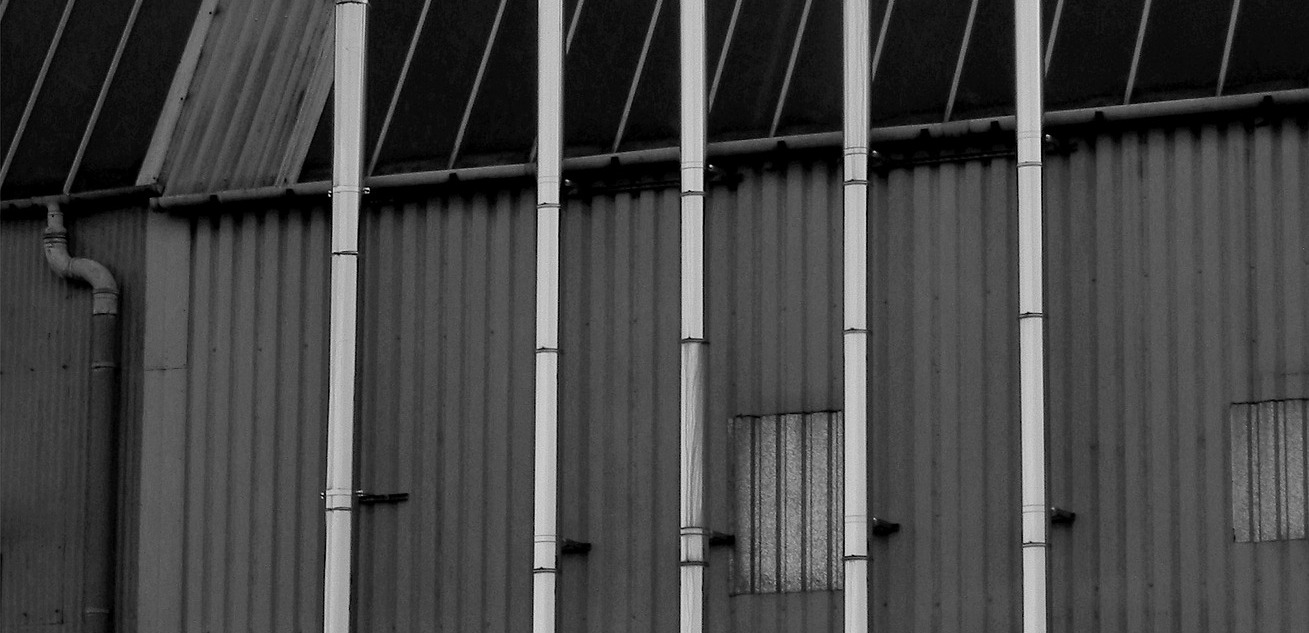Metal in construction

|

|

|

|
Contents |
[edit] Introduction
Metals are solid material that are generally hard, shiny, malleable, fusible, ductile, and have good electrical and thermal conductivity. Metals are commonly used in the construction industry due to their durability and strength to form structural components, pipework, cladding materials and other components.
[edit] Steel.
Steel is an alloy of iron and a number of other elements, mainly carbon, that has a high tensile strength and relatively low cost and is used for structural and other applications in the construction industry.
Types of steel include:
- Stainless steel: Steel combined with chromium (and sometimes nickel). Stainless steels generally do not form rust on their surfaces and do not discolour.
- Galvanised steel: A zinc coated steel that is resistant to corrosion.
- Weathering steel: Has a rust-like appearance that can resist corrosion and abrasion, by forming a protective surface layer, or patina.
- Other alloys.
For more information see: Steel.
[edit] Aluminium
Because of its ductility, aluminium can be formed into many shapes and profiles. Aluminium wall cladding systems are commonly used for building exteriors, with large wall panels requiring fewer joints, resulting in time-efficient installation. Today, aluminium is the second most used metal in buildings after steel, used for roofing, flashing, wall panels, windows and doors, spandrels, and so on.
For more information see: Aluminium.
[edit] Iron
Iron is the chemical element most commonly found on Earth by mass. As iron-bearing rock is plentiful, iron alloys are popular industrial and construction materials.
Types of iron include:
- Cast iron.
- Pig iron.
- Wrought iron.
For more information see: Iron.
[edit] Copper
Copper is a soft, malleable, and ductile metal with high thermal and electrical conductivity. It is a pinkish-orange colour. Copper is commonly used in the construction industry to form pipes and tubing, as it is malleable and joints can be easily formed by soldering. It is also used as a cladding material, sometimes allowed to oxidise to a blue green colour.
For more information see: Copper.
[edit] Lead
Lead is a heavy metal that can be toxic when absorbed into the body.
In construction, lead is used due to its ductility to form roofs and other cladding panels as well as windows, linings for cornices, tanks, copings, gutters and downpipes, flashing, and so on. It is also a component of soft solder.
Historically it was used in paints and pipework. Most lead-based paint was banned from sale to the general public in the UK in 1992. It has not been used for water pipes since 1970, however, it may still be present in older properties. It is recommended that lead pipes should be replaced.
[edit] Others
Other metals that might be used in construction include:
[edit] Alternative meanings
The term 'metal' can also be used to refer to:
- Molten glass.
- Constructing or repairing a highway with road metal (a metalled road). For more information see: Metalled.
[edit] Related articles on Designing Buildings
- Aluminium.
- Bronze.
- Cast iron.
- Copper.
- Corrosion resistant alloy CRA.
- Difference between cast iron and wrought iron.
- Failure of cast iron beams.
- Ferrous.
- Gold.
- Iron.
- Ironwork.
- Lead.
- Mesh mould metal.
- Metal composite panels.
- Metal fabrication.
- Metal profile cladding
- Metal roofing.
- Non-ferrous metals.
- Silver.
- Steel.
- Structural metal.
- The Iron Bridge.
- Tin.
- Types of metal.
- Types of materials.
- Types of steel.
- Vickers hardness rating scale.
- Wrought iron.
Featured articles and news
Government consultations for the summer of 2025
A year of Labour, past and present consultations on the environment, the built environment, training and tax.
CMA competitiveness probe of major housing developers
100 million affordable housing contributions committed with further consultation published.
Homes England supports Greencore Homes
42 new build affordable sustainable homes in Oxfordshire.
Zero carbon social housing: unlocking brownfield potential
Seven ZEDpod strategies for brownfield housing success.
CIOB report; a blueprint for SDGs and the built environment
Pairing the Sustainable Development Goals with projects.
Types, tests, standards and fires relating to external cladding
Brief descriptions with an extensive list of fires for review.
Latest Build UK Building Safety Regime explainer published
Key elements in one short, now updated document.
UKGBC launch the UK Climate Resilience Roadmap
First guidance of its kind on direct climate impacts for the built environment and how it can adapt.
CLC Health, Safety and Wellbeing Strategy 2025
Launched by the Minister for Industry to look at fatalities on site, improving mental health and other issues.
One of the most impressive Victorian architects. Book review.
Common Assessment Standard now with building safety
New CAS update now includes mandatory building safety questions.
RTPI leader to become new CIOB Chief Executive Officer
Dr Victoria Hills MRTPI, FICE to take over after Caroline Gumble’s departure.
Social and affordable housing, a long term plan for delivery
The “Delivering a Decade of Renewal for Social and Affordable Housing” strategy sets out future path.
A change to adoptive architecture
Effects of global weather warming on architectural detailing, material choice and human interaction.
The proposed publicly owned and backed subsidiary of Homes England, to facilitate new homes.
How big is the problem and what can we do to mitigate the effects?
Overheating guidance and tools for building designers
A number of cool guides to help with the heat.
The UK's Modern Industrial Strategy: A 10 year plan
Previous consultation criticism, current key elements and general support with some persisting reservations.
Building Safety Regulator reforms
New roles, new staff and a new fast track service pave the way for a single construction regulator.

























Comments
[edit] To make a comment about this article, or to suggest changes, click 'Add a comment' above. Separate your comments from any existing comments by inserting a horizontal line.